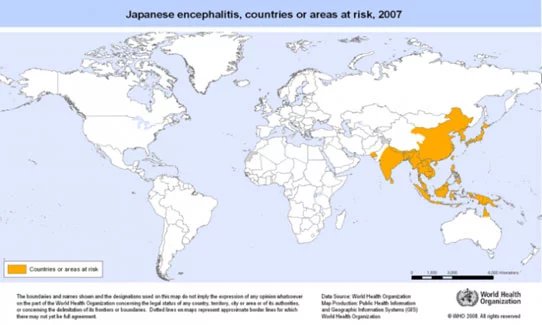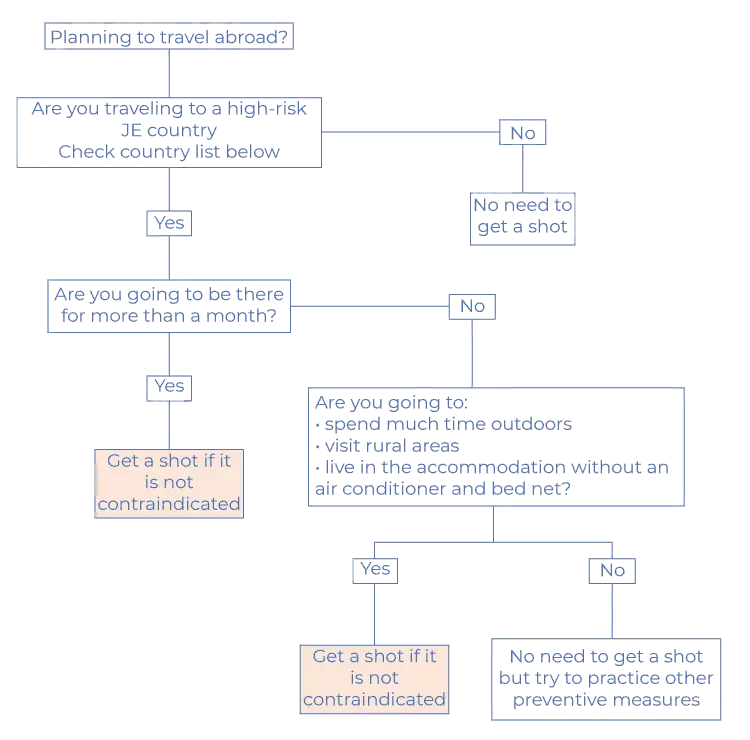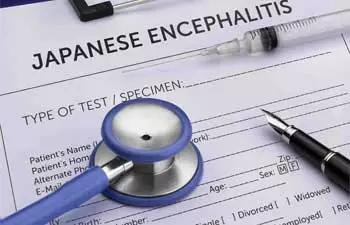Japanese Encephalitis vaccine
This is a practical guide to Japanese encephalitis vaccination.
The best part?
We’ll give you only factual information based on reliable sources and our nearly 20 years of experience in travel medicine.
Contents
At a glance
 Required or recommended? The Centers for Disease Control and Prevention (CDC) recommends it; no countries require it.
Required or recommended? The Centers for Disease Control and Prevention (CDC) recommends it; no countries require it. Where is JE common? Almost all countries of Asia and in some of the Western Pacific region
Where is JE common? Almost all countries of Asia and in some of the Western Pacific region How is JE transmitted? Through mosquito bites (mainly Culex species)
How is JE transmitted? Through mosquito bites (mainly Culex species) Duration of JE vaccine protection: Five years
Duration of JE vaccine protection: Five years

Japanese Encephalitis Vaccine Info
At least one week before departure
of JE vaccine
Single dose: suboptimal (does not give enough protection)
Two doses: up to 99%
JE vaccine protection
Five years
of JE vaccine
Local soreness, swelling, redness
Fever
Headache

Where It’s Most Common
Japanese Encephalitis (JE) [3] Japanese encephalitis https://www.cdc.gov/japaneseencephalitis/vaccine/index.html is an infectious disease, which is endemic in 26 countries in the Western Pacific and Southeast Asia. The annual number of JE cases exceeds 68,000. This fact makes Japanese encephalitis one of the main causes of encephalitis (inflammation of the brain) in Asia and other endemic areas.


About Japanese Encephalitis Infection
This section summarizes the most important facts about Japanese encephalitis.

Japanese Encephalitis (JE) Vaccine FAQ
Here are the questions our patients frequently ask about the Japanese encephalitis vaccination. [1] Japanese Encephalitis Vaccine https://www.cdc.gov/japaneseencephalitis/vaccine/index.html We’ve answered them based on 20 years of being the busiest travel clinic in Midtown Manhattan. Let’s dive in!









